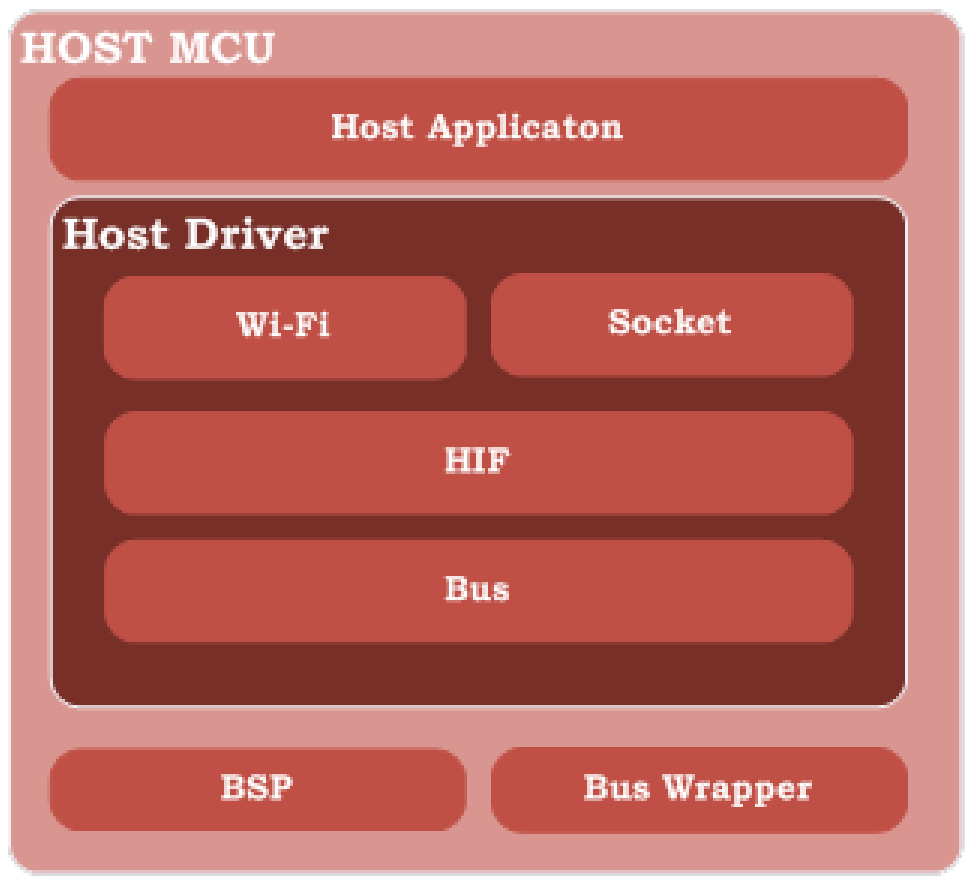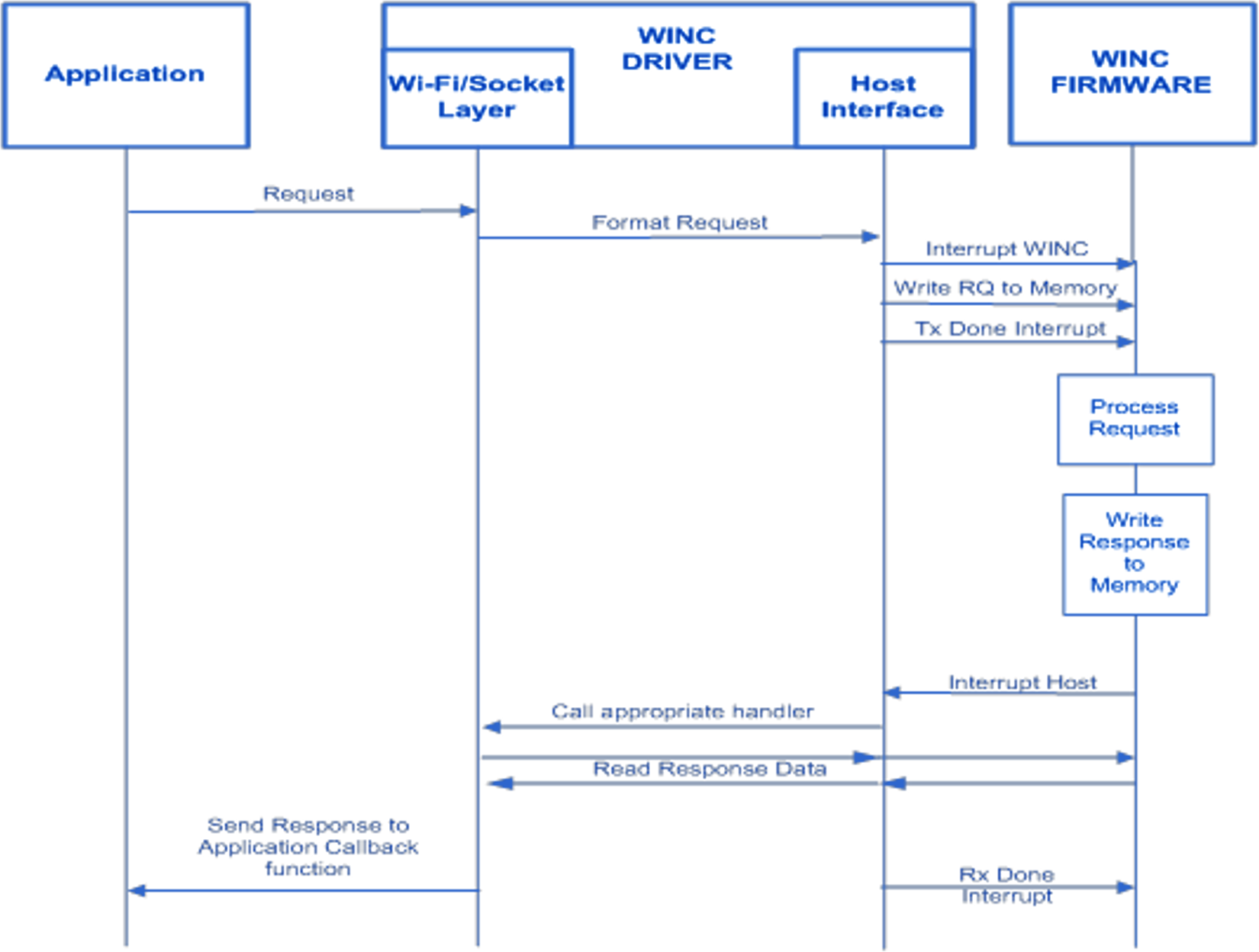13 Host Interface (HIF) Protocol
Communication between the user application and the WINC device is facilitated by the driver software. This driver implements the Host Interface (HIF) Protocol and exposes an API to the application with various services. The services are broadly divided in two categories: Wi-Fi device control and IP Socket. The Wi-Fi device control services allow actions such as channel scanning, network identification, connection and disconnection. The Socket services allow data transfer once a connection is established and similar to BSD socket definitions.
The host driver implements services asynchronously. This means that when the application calls an API to request a service action, the call is non-blocking and returns immediately, often before the action is completed. Where appropriate a notification that an action has completed is provided in a subsequent message from the WINC device to the host which is delivered to the application via a callback function. In general, the WINC firmware uses asynchronous events to signal the host driver of certain status changes. Asynchronous operation is essential where functions (such as Wi-Fi connection) may take significant time.
When an API is called, a sequence of layers is activated to format the request and arranging to transfer it to the WINC device through the serial protocol.
After the application sends request, the Host Driver (Wi-Fi/Socket layer) formats the request and sends it to the HIF layer which then interrupts the WINC device to notify that a new request is posted. Upon receipt, the WINC firmware parses the request and starts the required operation.

The Host Interface Layer is responsible for handling communication between the host MCU and the WINC device. This includes interrupt handling, DMA control and management of the communication logic between the firmware driver in the host and the WINC firmware.

